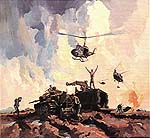
Atomic Tank: The Unique History of Centurion 169041
Centurion tank Mark 3 Type K with constructor’s number 39/190 commenced manufacture at the Royal Ordnance Factory, Barnbow, UK in December 1951, and was accepted by the Ministry of Supply at the end of January 1952. Assigned the British registration 06 BA 16, the tank was supplied to the Australian Commonwealth Government under Contract Demand 2843, arriving in Australia in late May 1952.
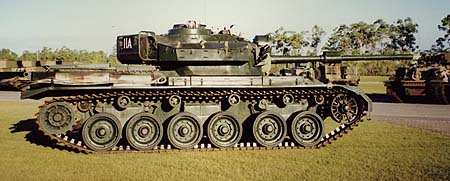


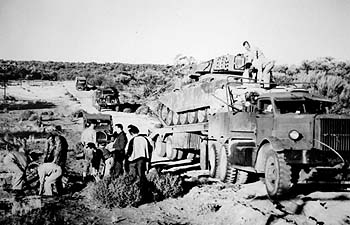
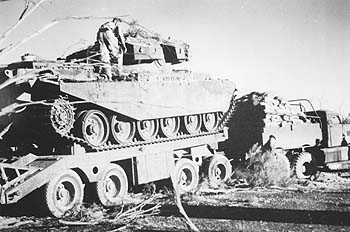
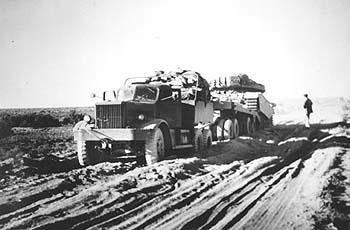
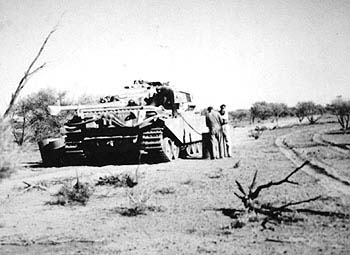
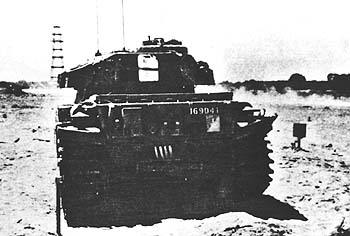
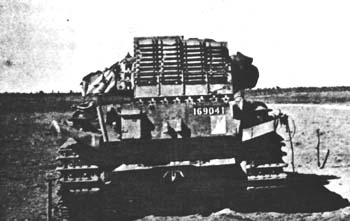
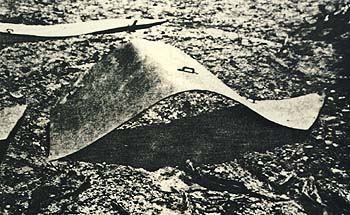
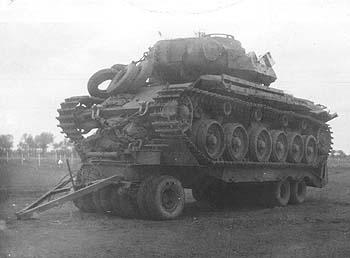
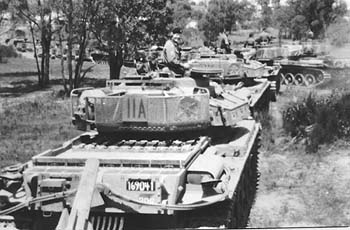

It was initially sent to Detachment, 3 Base Ordnance Depot, Puckapunyal, Victoria for preparation and the assignment of its Australian Army registration number 169041, before being issued to 1st Armoured Regiment, also based at Puckapunyal. For the next year, 169041 trundled around the training area, clocking up around 470 miles.
In early July, 1953, orders were issued for the movement of the tank to Woomera, in South Australia, where it was to be transferred to the Department of Supply for use in a secret test.
The test was codenamed Operation Totem, and was one of a number of British atomic tests carried out in remote areas of Australia during the 1950s. While the primary focus of these tests was the performance of the atomic weapons, there was also the opportunity to measure the blast effects on various types of military equipment.
Although Centurion Mark 3 tanks had only been in service with the Australian Army since September 1951, and there were plenty of obsolescent Second World War tanks available, it was decided that an expensive current issue Centurion tank only a year old would be provided. With every expectation that the damage would be so severe as to effectively destroy the vehicle, the provision of a Centurion was certainly a measure of the importance placed on the atomic tests by the Australian Government.
From Woomera, the tank would be moved overland to a remote outback location called Emu Field: a total of some 1,242 miles from its base at Puckapunyal. This was quite an undertaking in the early 1950s, when roads and railways, particularly those away from the main arterial routes, were often incapable of accommodating such a large mass.
Moreover, the Army’s available transporter trailer was the Dyson Mk3 towed by a Diamond-T Model 980 (M20) 6x4 tractor. This truck-trailer combination was rated to carry a maximum load of 112,000 pounds, which was the Centurion Mk3’s laden weight.
On 18 July 1953, 169041 was transported the short distance from Puckapunyal to Dysart railway siding by road, then loaded onto a railway flatcar for the journey to Port Pirie in South Australia, where it arrived on 23 July.
During this time, a tractor-trailer combination provided by the Armoured School at Puckapunyal had made the road journey to Port Pirie to meet the train and then transport the tank to Woomera. The vehicle, together with a ¼ ton jeep as escort, left Puckapunyal on 17 July.
Three other vehicles, two 3 ton trucks and another ¼ ton jeep, left Woomera to also meet the train. These vehicles carried fuel, water, rations, cooking equipment and sleeping gear for the party, which by this stage numbered 10 men. They also carried plenty of vehicle recovery equipment and spare parts.
With the tank transferred to the trailer, the convoy set off for Woomera early on the morning of 24 July. Averaging around 70 miles per day, it took nearly three days to cover the 200 miles, with the convoy arriving at their destination late on 26 July.
At Woomera, the tank was stowed with a complete issue of ammunition, including grenades and 2-inch smoke bombs, before the convoy commenced the 300 mile move across rough desert tracks, Spinifex and sand dunes to Emu Field.
The tracks were not much more than dozer lines across the sandy terrain, and the transporter was stretched to its limit. On several occasions, the tank had to be dismounted from the trailer and used to tow the transporter through particularly difficult sections, then laboriously reloaded to continue the journey. For the last 170 miles to Emu Field, 169041 was driven overland through the bush under its own power.
The tank was in position at the test site by early August, and over the next two months was subjected to various inspections and measurements. It was also fitted with sensors and makeshift dummy crewmen.
Positioned to face the low-yield atomic blast head on, 169041 was less than 500 yards from the epicentre.
During the few hours leading up to detonation on 15 October 1953, the Centurion’s main and auxiliary generator engines were started and the various electrical systems switched on. All hatches were then closed.
Surprisingly, the blast caused less damage than expected.
- The tank stayed upright, but was pushed back over 5 feet and skewed slightly to the left.
- Most of the heavy transmission deck covers were thrown open and ended up resting on the rear of the turret.
- Surfaces facing the epicentre were all sandblasted and the glass lenses on the optical equipment were badly pitted.
- The heavy side plates were all torn off and deposited up to 200 yards away, while the track guards and side bins were badly distorted but remained on the vehicle.
- Lighter items such as the aerials were carried away, and canvas components like the mantlet cover were burned off.
- Interestingly, the report concluded that the most vulnerable part of a Centurion tank caught in an atomic blast was the crew!
When first observed by a survey party only 60 minutes after the blast, the engine was not running, but investigations later ascertained that it had simply run out of fuel a few minutes after the blast.
When started three days later, it ran smoothly and was driven from the site towards Woomera. A laden 5-ton trailer was towed for the first 31 miles of the journey, and then a 3-ton trailer was added as well for the next 109 miles. During this time, a 1-ton 4x4 truck was assisted over the sand hills on several occasions.
For the next 120 miles, the going was better and the 5-ton trailer was transferred to a truck, leaving the tank towing only the 3-ton trailer.
At a point near Twins Homestead and 130 miles short of the destination, however, the engine had had enough, throwing a connecting rod out through the side of the crankcase.
The dead tank was recovered in mid-December by a RAEME crew using a Rogers Brothers M9 trailer, rated to carry only 90,000 pounds! After experiencing a number of tyre blow-outs, the recovery crew arriving at Woomera on Christmas Eve. Decontamination of the vehicle was carried out during early 1954 in preparation for transport to Puckapunyal.
It was not until May 1954, that 169041 began the journey back to Puckapunyal. The return trip was by road to the port of Whyalla where the tank was loaded aboard a ship to Melbourne, and then by rail to Dysart Siding. The final short journey to Puckapunyal was by road transporter, where it arrived about 21 July.
There were concerns about the degree of radioactive contamination so the Commonwealth X-Ray and Radium Laboratory conducted tests at Puckapunyal on 26 July 1954. The results lead the testing officer to conclude that the tank was not severely contaminated, but the turret ring should be tested again once the turret was lifted off. This was carried out sometime shortly afterwards, and again the conclusion was the same.
By 11 September 1956 a new main engine had been installed and 169041, less turret, had become the regiment’s tow tug. It remained in this role for the next couple of years, until sent for base overhaul in 1958. This, together with an upgrade to Mk5 standard, was completed in 1960 and 169041 was placed in storage.
Late 1962 saw the tank again issued to 1st Armoured Regiment at Puckapunyal, where it was used for training until late 1966, when it went for its second base overhaul. The overhaul included another upgrade to what is commonly known as Mk5/1(Aust) standard. This included the addition of a .50-inch Ranging Machine Gun, different sights, fitting for the Infra Red night fighting illumination system, appliqué armour on the upper glacis plate and a 100-gallon fuel tank at the rear.
The Vietnam Conflict had been raging for some years by the time the Australian Government committed a Centurion tank squadron to the fray in early 1968. Centurion 169041 was sent to join the squadron’s 4 Troop in September, 1968. It was initially the Troop Corporal’s tank with the call sign 34B.
In May 1969, during a fierce firefight 169041 call sign 24C was penetrated by an RPG. The turret crew were all wounded by shrapnel as the RPG entered the lower left side of the fighting compartment, travelled diagonally across the floor and lodged in the rear right corner. The operator, Trooper R. Carter, was medevaced while the others remained on duty. Nothing vital was hit, however, and the tank remained battleworthy.
By the end of 1969, 169041 had covered nearly 2500 miles on operations, and was ready for yet another rebuild. Replaced in the squadron in January 1970, 169041 spent its final days in South Vietnam with 2 AOD at Vung Tau while awaiting space on a transport ship.
Leaving Vietnam in April the tank went to Bandiana for its third base overhaul, which was completed in late 1970. After a few years in storage, the tank was again issued to 1st Armoured Regiment, this time to A Squadron, where it was given the call sign 11A.
November 20 1976 would be the last all-Centurion Cambrai Day parade, as arrival of the replacement tank, the German Leopard AS1, was imminent. 169041, call sign 11A commanded by Sergeant Peter Blackwood and driven by Trooper John Atkinson, was one of around 60 Centurion vehicles, including ARVs, Bridgelayers and a dozer tank, that participated in this historic occasion. Resplendent in an unofficial drab olive and pink-brown camouflage scheme, 169041 took its place with a number of other veterans of combat operations in South Vietnam for this final parade.
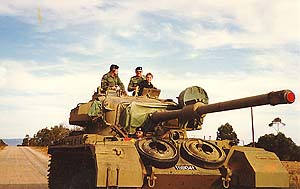

Although sent into long term storage during the first half of 1977, the tank was recovered back to 1st Armoured Regiment several years later. Restored to reliable running condition, it was used to carry the retiring Chief of the General Staff, Lieutenant General H J Coates, during his farewell parade in April 1992.
The tank has been fitted with the original type of front track guards, and the Infra Red Searchlight is in the mounted position to the left of the main armament.
By the early 1990s, few members of the Regiment were qualified to handle the Centurion, so Major Martin took the driver's position.

Tank 169041 is still with the Regiment at their Robertson Barracks, Palmerston, Northern Territory home.
Although other tanks have been exposed to atomic testing, amongst them a couple of British Centurion tanks deployed within the Maralinga, South Australia target area during the Buffalo series of atomic tests in the latter half of the 1950s, 169041 is the only tank known to have withstood atomic tests and subsequently gone on for another 23 years of service, including 15 months on operational deployment in a war zone.
~ 169041’s service life certainly was unique! ~
